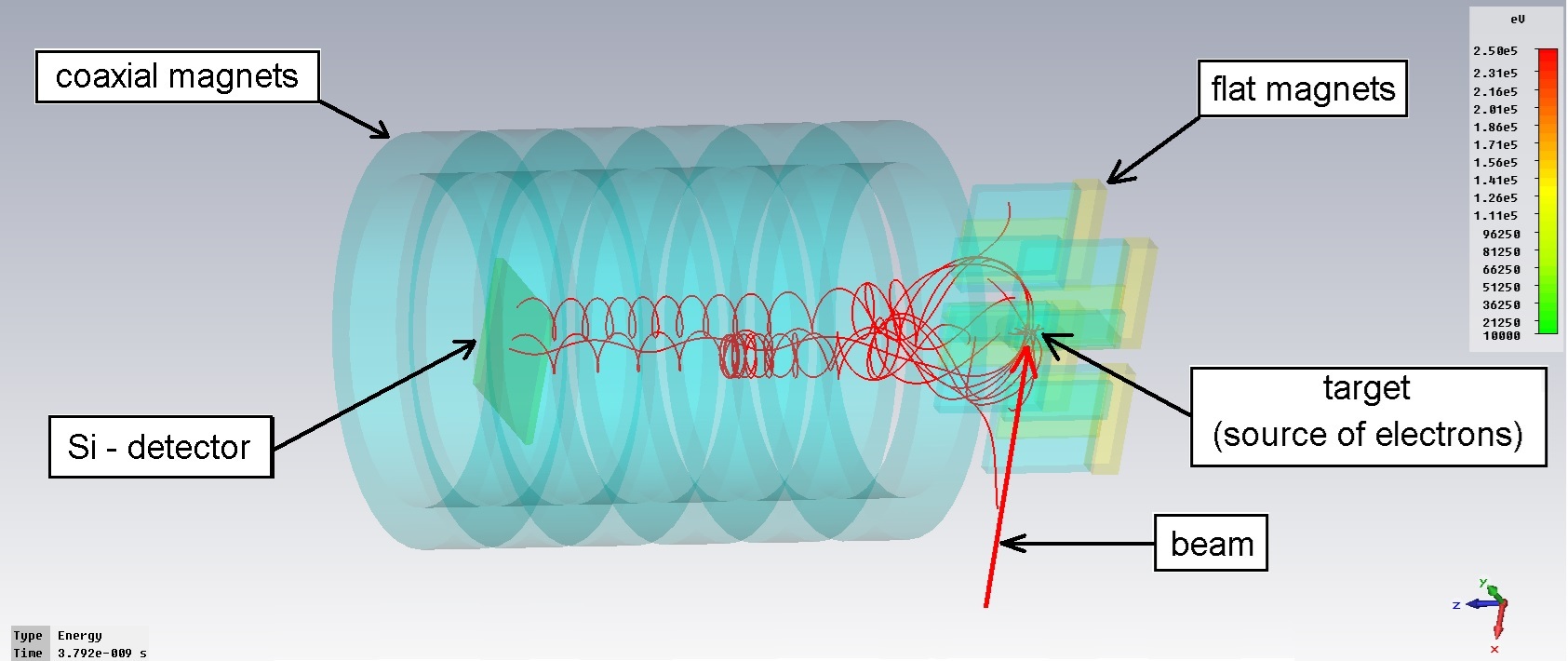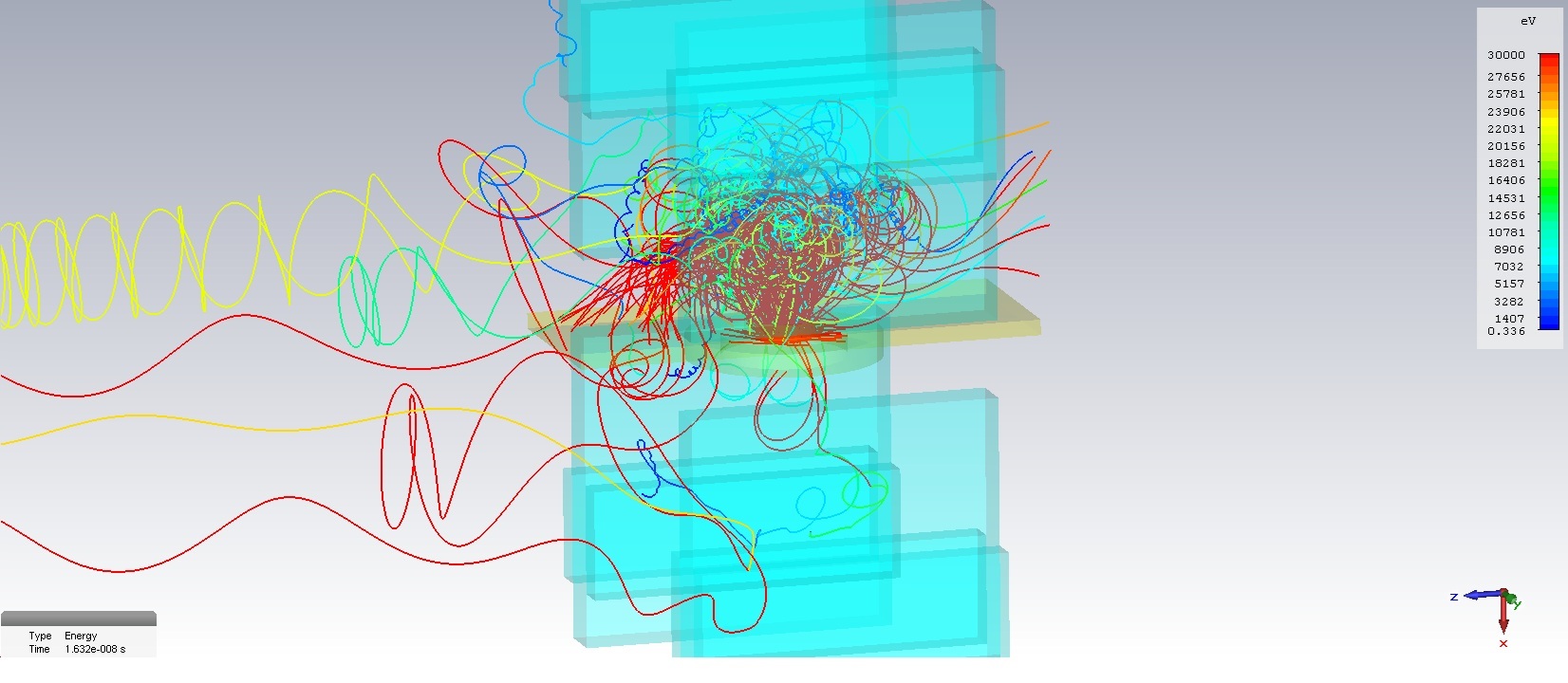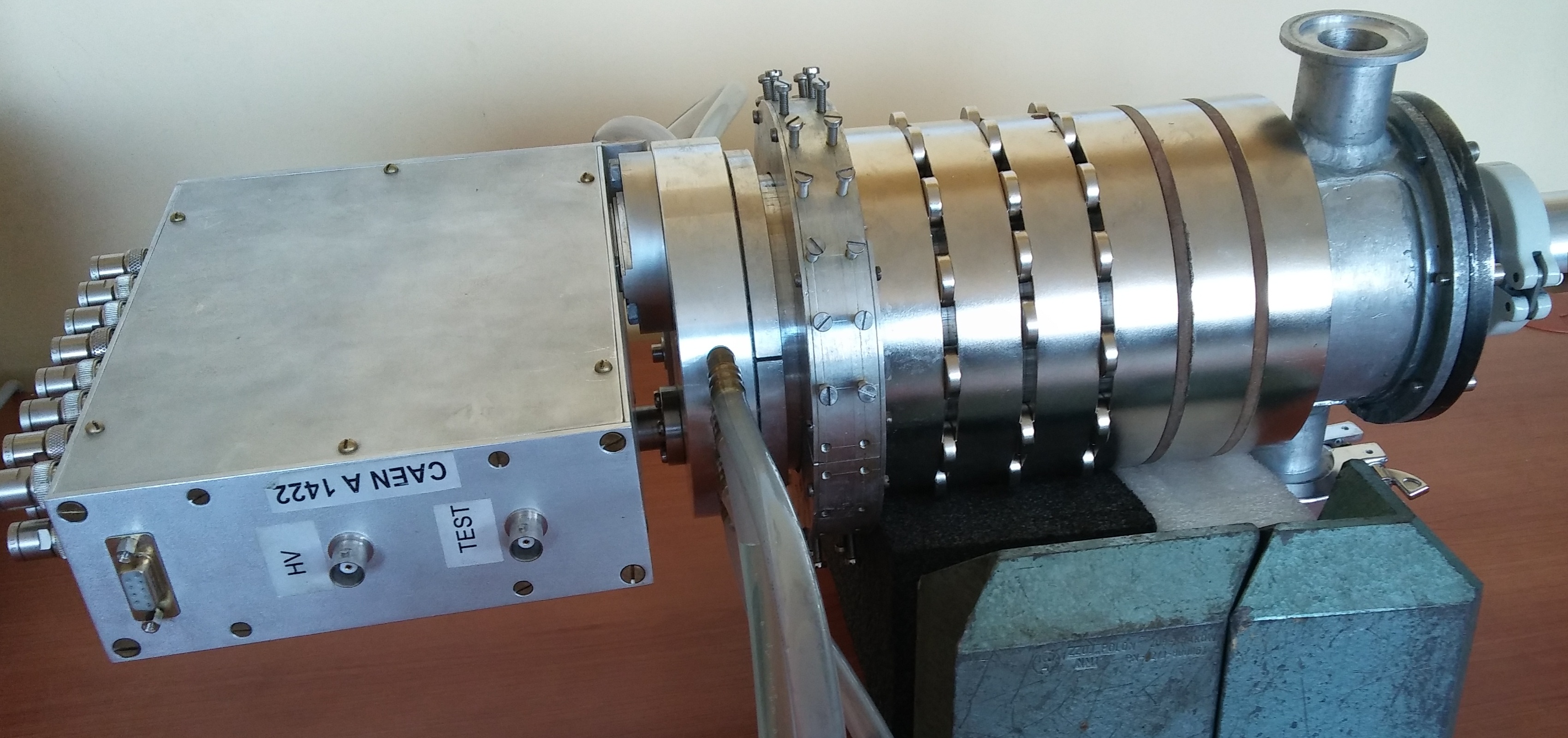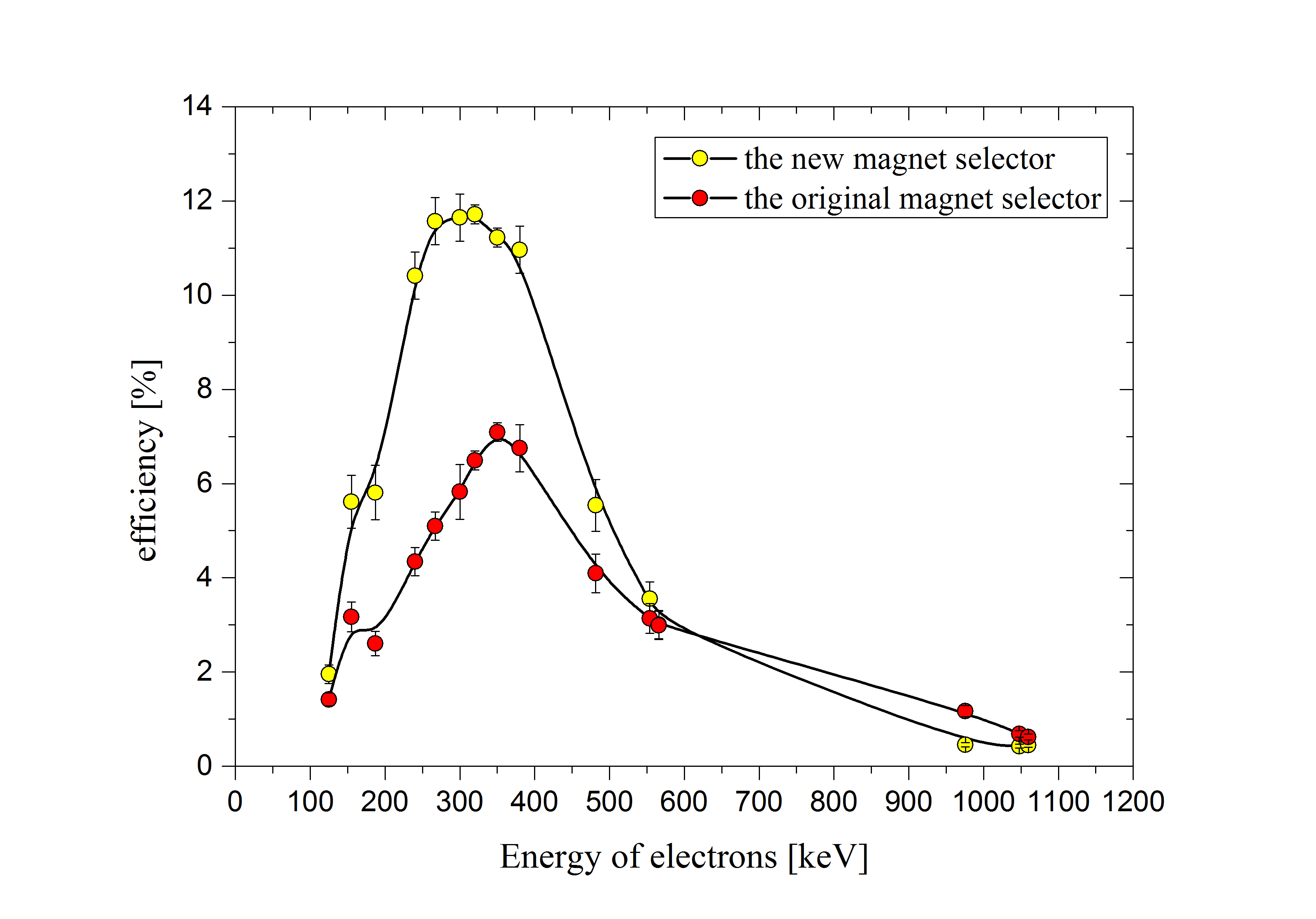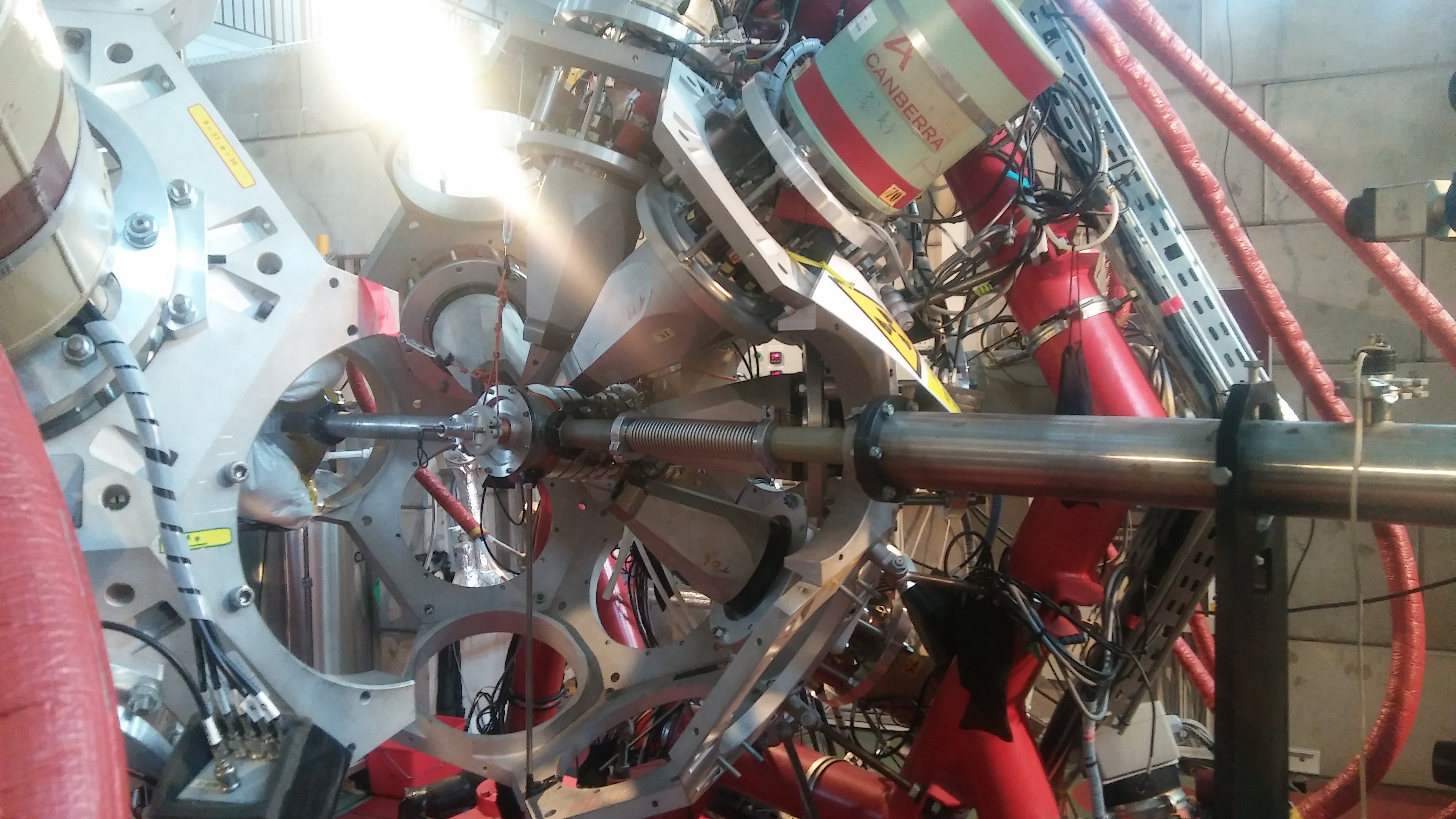ULESE (University of Lodz an Electron SpEctrometer)
Contact: J. Perkowski, jaroslaw.perkowski(at)uni.lodz.pl
The ULESE conversion-electron spectrometer for “in-beam” measurements was designed and constructed at the University of Lodz. Coincidences between gamma-rays and internal conversion electrons allow determining transition multipolarities. To perform this type of measurement the ULESE electron spectrometer could be used together with the EAGLE array.
This electron spectrometer is characterized by high efficiency up to 12% at the energy of 300 keV, good energy resolution < 1% at 1 MeV, and what is the very important good suppression of delta electrons, positrons, and photons emitted from the target. The elimination of delta electrons is crucial in electron conversion spectroscopy performed in “in-beam” measurements. This achievement was obtained by using a combination of the magnetic field in two different layouts: perpendicular and parallel to an axis of spectrometer being orthogonal to a beam line. Conversion electrons produced in a target in nuclear reactions are bent to the detector by this magnetic field; on the contrary positrons are bent in opposite direction. Electrons emitted in forward and backward directions from both sides of the target can reach the Si detector. Six magnets in a form of coaxial rings produce a longitudinal magnetic field for transporting electrons and focus them on the surface of the detector which is located 20 cm from the target. The 16-segments square silicon detector at 5 cm side and thickness of 1.5 mm manufactured by the Micron Semiconductor Ltd. company is used for detection of electrons. This thickness of the detector is enough to register 1 MeV electrons.
The idea of the spectrometer and example of simulations of electron trajectories for electron energy of about 250 keV performed by the CST PARTICLE STUDIO software are shown in Fig. 1. For clarity, only a few electron trajectories are presented. Delta electrons are reduced significantly by used magnetic field and special shape of the target holder which is shown in Fig. 2. The Fig. 3 presents the photo of the ULESE spectrometer together with the box of preamplifiers. The origin and current efficiency of the ULESE spectrometer (Fig. 4) was determined experimentally using calibrations sources (207Bi and 133Ba). The compact construction of the ULESE spectrometer (~40 cm length and ~20 cm wide) allows easily to combine it with a gamma array (the EAGLE array at the HIL UW) which is shown in Fig. 5.
The characteristic features of the ULESE spectrometer are as follows:
- relatively small dimensions,
- detection efficiency of electrons up to 12% at an energy of 300 keV for the current geometry of magnetic field,
- adapting the spectrometer to the requirements of a specific experiment by modification of this efficiency, which could be modified by a change of position and/or number of Nd-Fe-B selector magnets,
- elimination of positrons,
- reduction of the X-ray background,
- elimination of delta electrons,
- effective two-step cooling of the silicon detector by Peltier modules,
- energy resolution of the silicon detector <1% for electrons energy of 1 MeV,
- possibility of coupling with the EAGLE gamma-ray array.
References:
J. Perkowski et al., Rev. Sci. Inst. 85 (2014) 043303
J. Perkowski et al., Phys. Rev. C 95 (2017) 014305
Fig. 1 The idea of the ULESE electron spectrometer and trajectories of a few 250 keV electrons traveling inside this apparatus. The CST software was used for simulations.
Fig. 2 The trajectories of a few 30 keV (mainly delta electrons) electrons traveling the ULESE spectrometer. The CST software was used for simulations.
Fig. 3 The picture of the ULESE electron spectrometer together with the box of preamplifiers.
Fig. 4 The absolute efficiency of the origin and current ULESE spectrometer obtained using calibration sources: 207Bi and 133Ba.
Fig. 5. The EAGLE gamma-ray array with the ULESE spectrometer placed in the centrum of the set-up.


